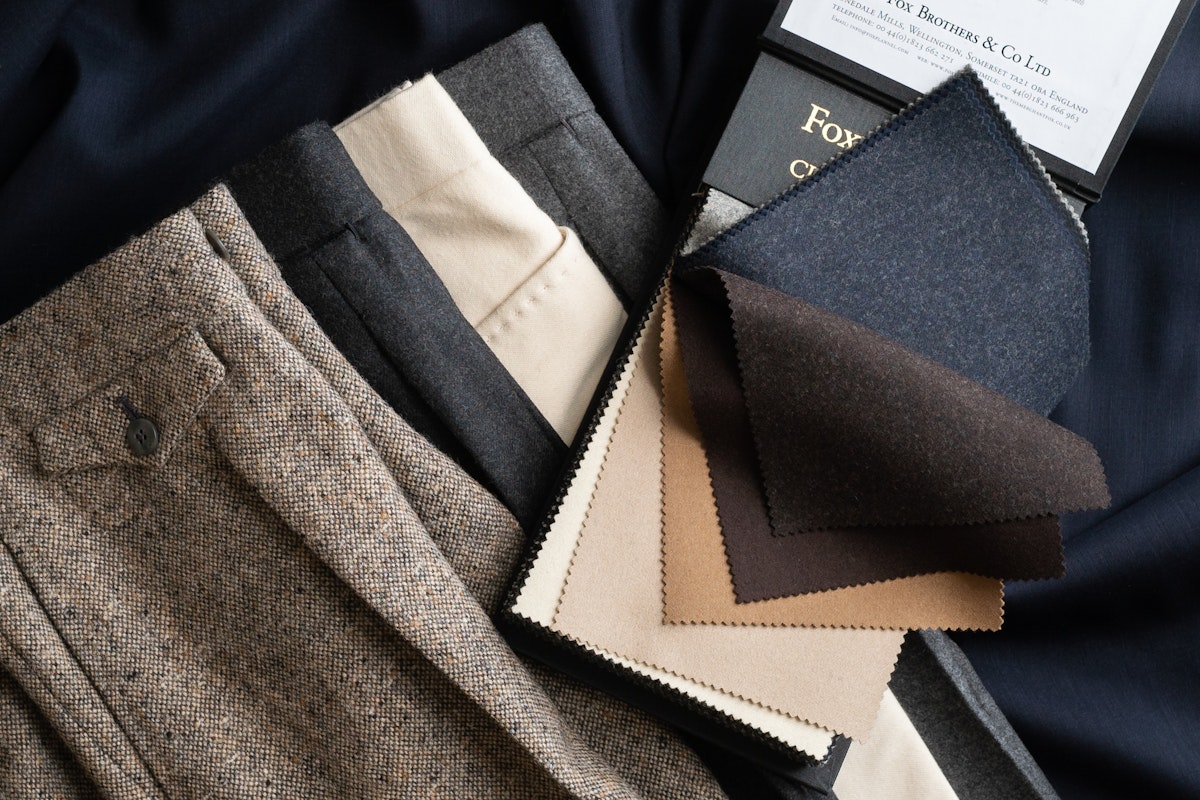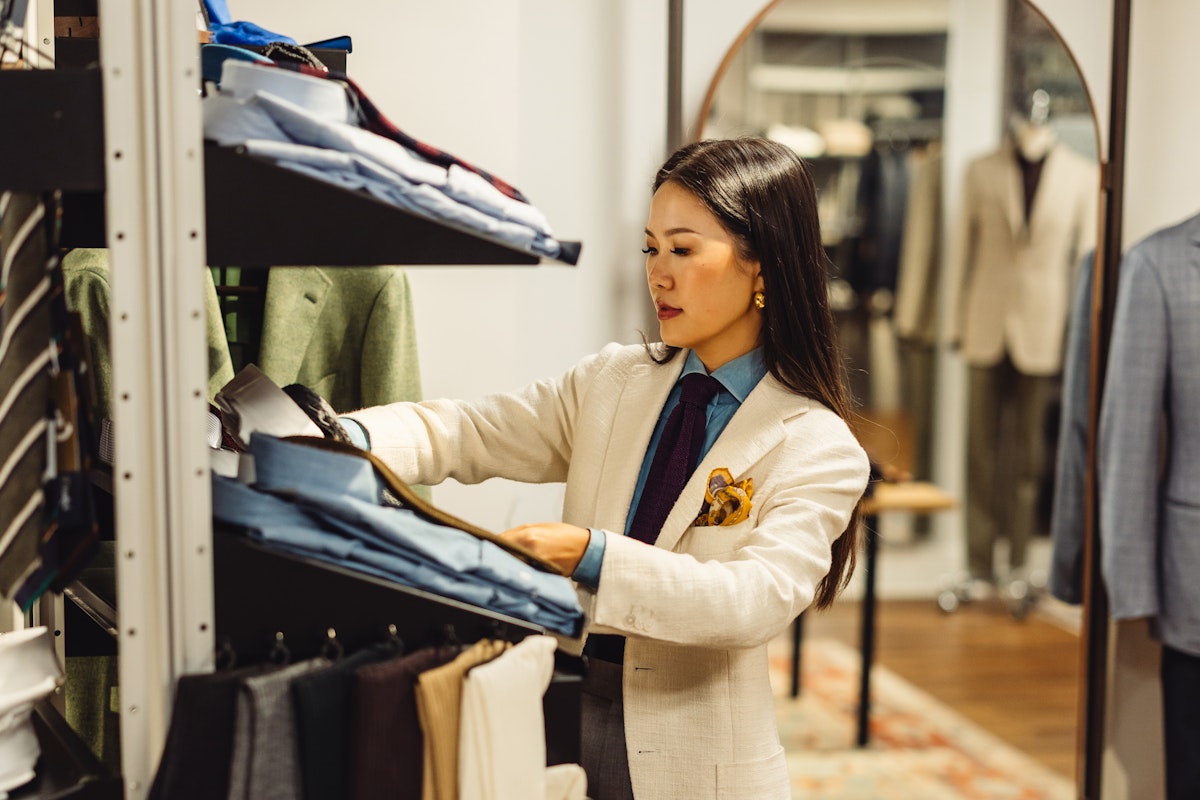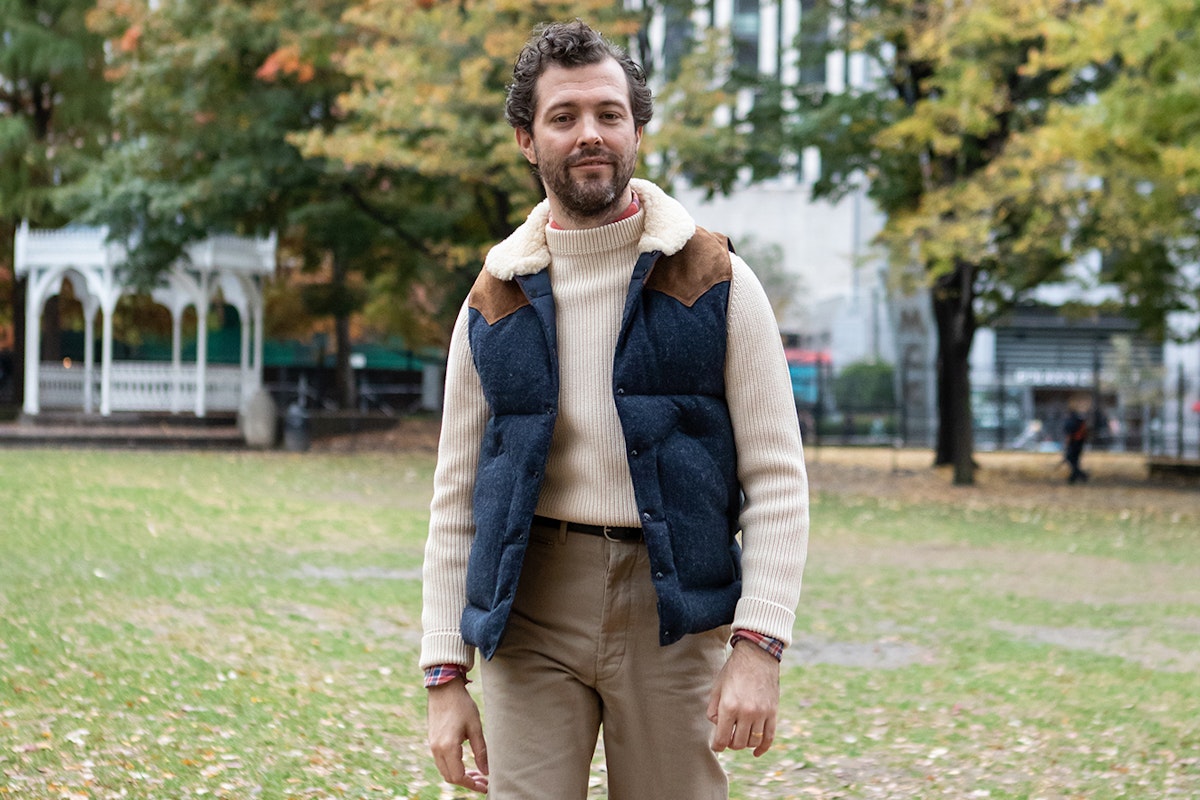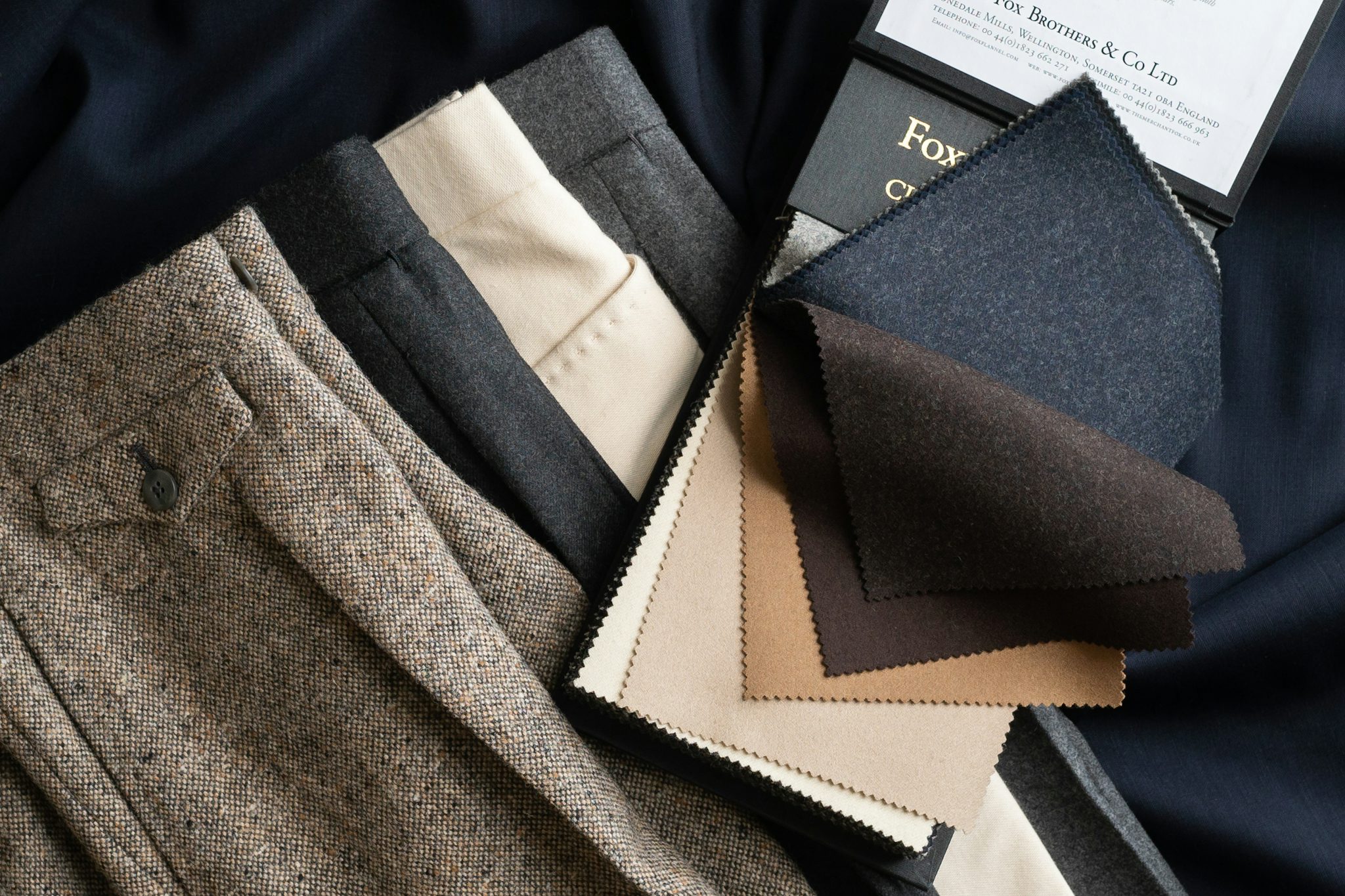
Our guide to building a wardrobe of classic trousers for all seasons.
If you were shopping for a new trouser wardrobe a hundred years ago, you could get everything you needed in about a day. The average man's wardrobe in the early 20th century was monastic by today's standards. Most men wore suits for both work and leisure, which meant their trousers were picked out for them. If they wanted to switch things up, they swapped out their suit pants for white flannels and white shoes.
A shift happened sometime around the 1920s. Ivy League students wanted something more comfortable they could wear for spectator sport. American soldiers returning home from Western Europe also raided department stores for sportier clothes. This was the start of sport coat culture — the first time odd jackets became widely adopted and, with it, the need for more trousers. By the 1970s, the number trouser options was downright dizzying, especially as designers came up with various weights, weaves, colors, fibers, and finishes for something a simple as a pair of pants.
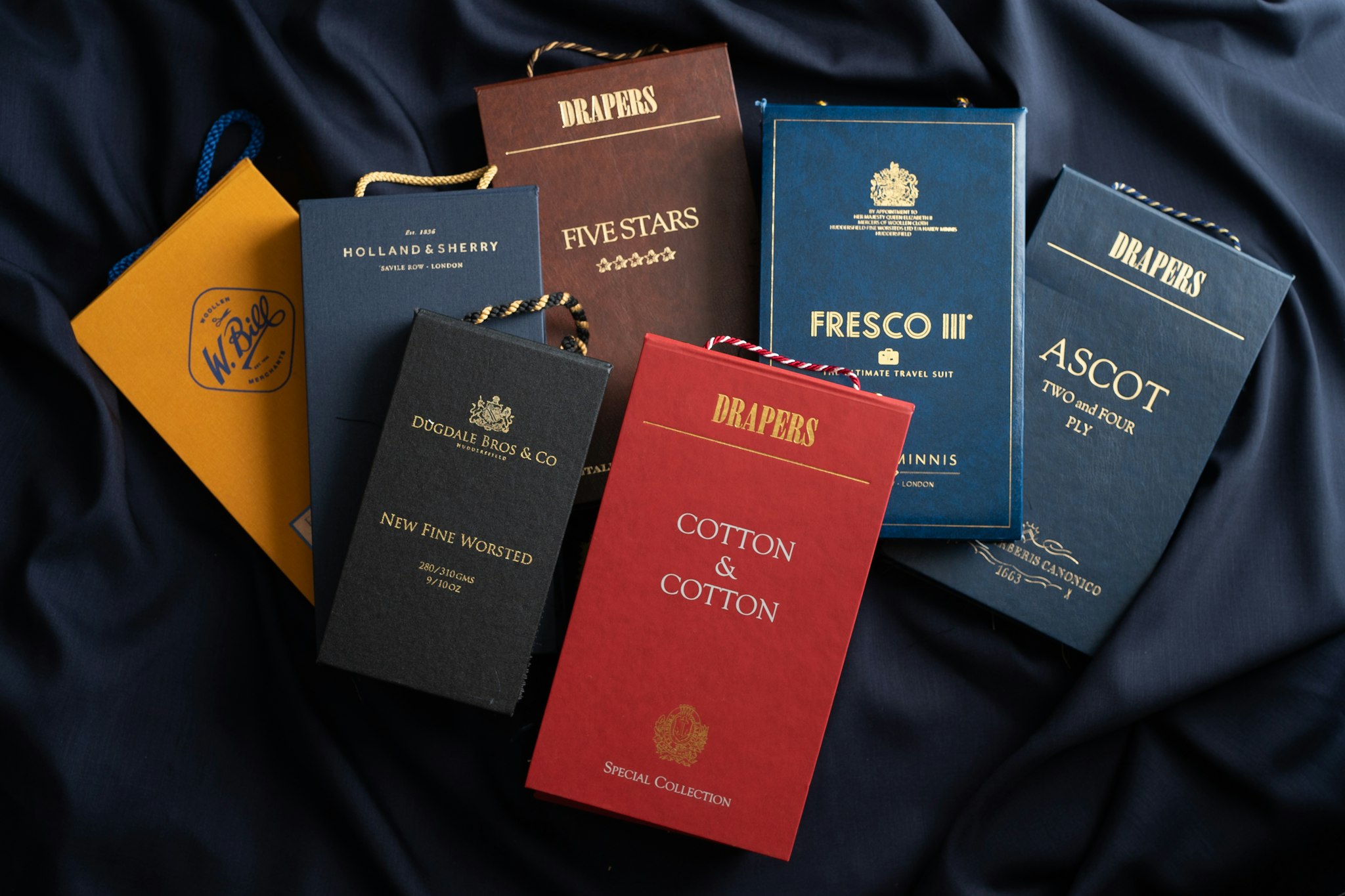
The good news is that you can build a reliable trouser wardrobe if you stick to some fundamental principles. The first is to stay close to basic colors, namely grey and tan. These can be worn with almost any kind of jacket. Since tailored outfits typically keep the focus up top – centered on the v-shape created by a jacket, tie, and shirt – you want the trousers to be simple and visually undemanding.
"When a guy comes in, we always start with what they want to get out of their trouser wardrobe," says Alan See, The Armoury's co-founder. "A wardrobe built for a conservative business environment will be different from one primarily used for casual purposes. It also depends on the climate and the region."
Most people, however, will benefit from building out their grey trousers first. Year-round options can be found in Draper's Ascot book, which has four-ply worsteds in light- and mid-grey. Darker charcoal shades can be found in Draper's Five Star and Dugdale Bros’s New Fine Worsteds. "Charcoal trousers can be handy, but it's surprisingly hard to find good fabrics in this color,” says Mark Cho, the shop's other co-founder. “We like charcoals that have a bit of visual depth to them, so they don’t look flat.”





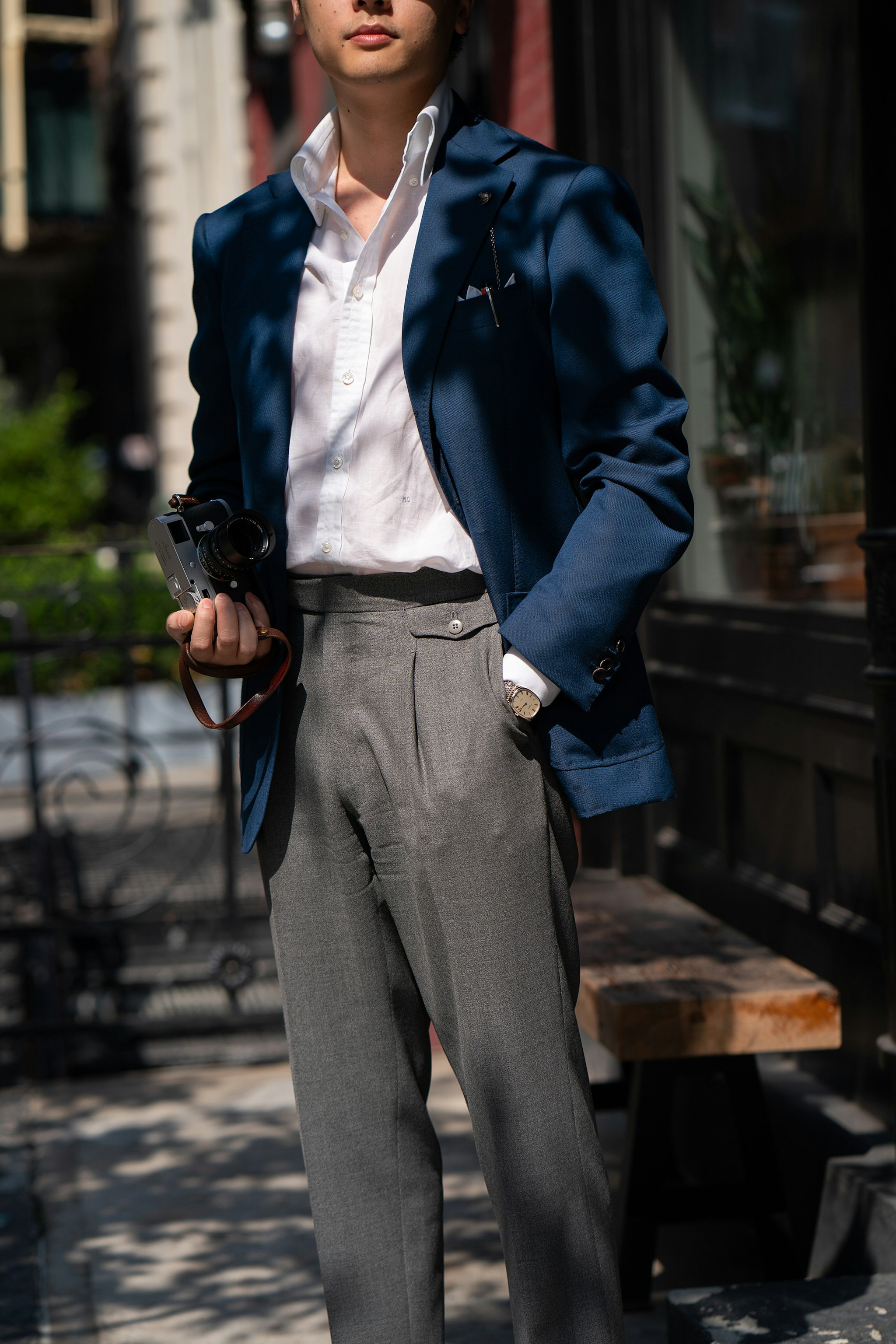

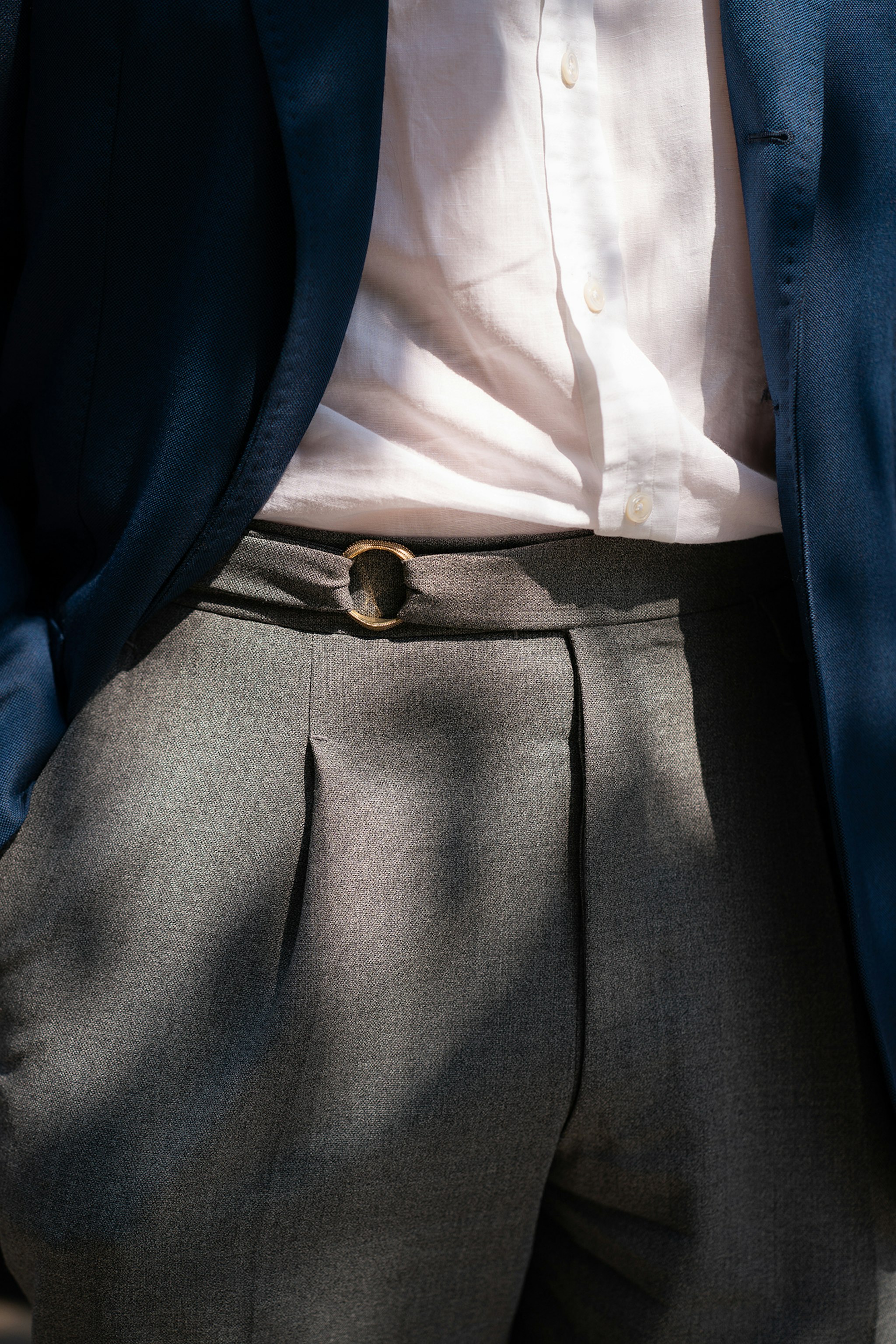
Once you have trousers that can work most of the year, it's time to get some seasonal variety. Hight-twist, open weave wools, such as those from Minnis Fresco and Holland & Sherry's Crispaire, are not only more durable, they're also breathable. "For summer weekends, it's chinos," adds Alan. "For more conservative guys, we recommend neutral shades in beige. But if a guy likes to wear more color in his wardrobe, we suggest khakis that have a slightly yellower cast. A warmer shade allows them to pair beige trousers with brighter colors." There's no shortage of suitable books when it comes to cotton. W. Bill, Holland & Sherry, Drapers, Brisbane Moss, and Spence Bryson all have attractive options.
"The thing about cotton is that you don't want to go too lightweight," says Mark. "Otherwise, chinos can end up looking like pajamas. Slightly heavier cotton will hold its shape better." Alan notes he especially likes the cottons in Brisbane Moss' Tennyson bunch, which are heavy enough to hold a crease.
The same concept applies for fall/winter. Grey and tan will always be your most versatile colors, but you’ll want something cozier for the weather. If you work in a conservative environment, there will always be a place for flannel and gabardine ("we like them in lighter weights in Hong Kong, given the humidity," says Alan). Cotton varieties such as moleskin, corduroy, and brushed cotton can then be used in more casual settings or the weekend. "The British are known for making flannels with a slightly colder, yellow cast, which looks great with black shoes," says Mark. "Fox Flannel and Holland & Sherry are particularly good. Especially in light- and mid-grey, where you can see more of the milling in the finish."
"Some guys find they wear trousers out quickly," says Mark. "For those guys, we often recommend high-twist wool in the summer and then a covert cloth in the winter. Covert cloth is a tightly woven twill, so it's hard-wearing. Holland & Sherry's Dakota bunch has some particularly nice shades that almost look like gabardine. Since covert, like gabardine, can look a bit shiny, I find they do better in lighter colors such as beige."
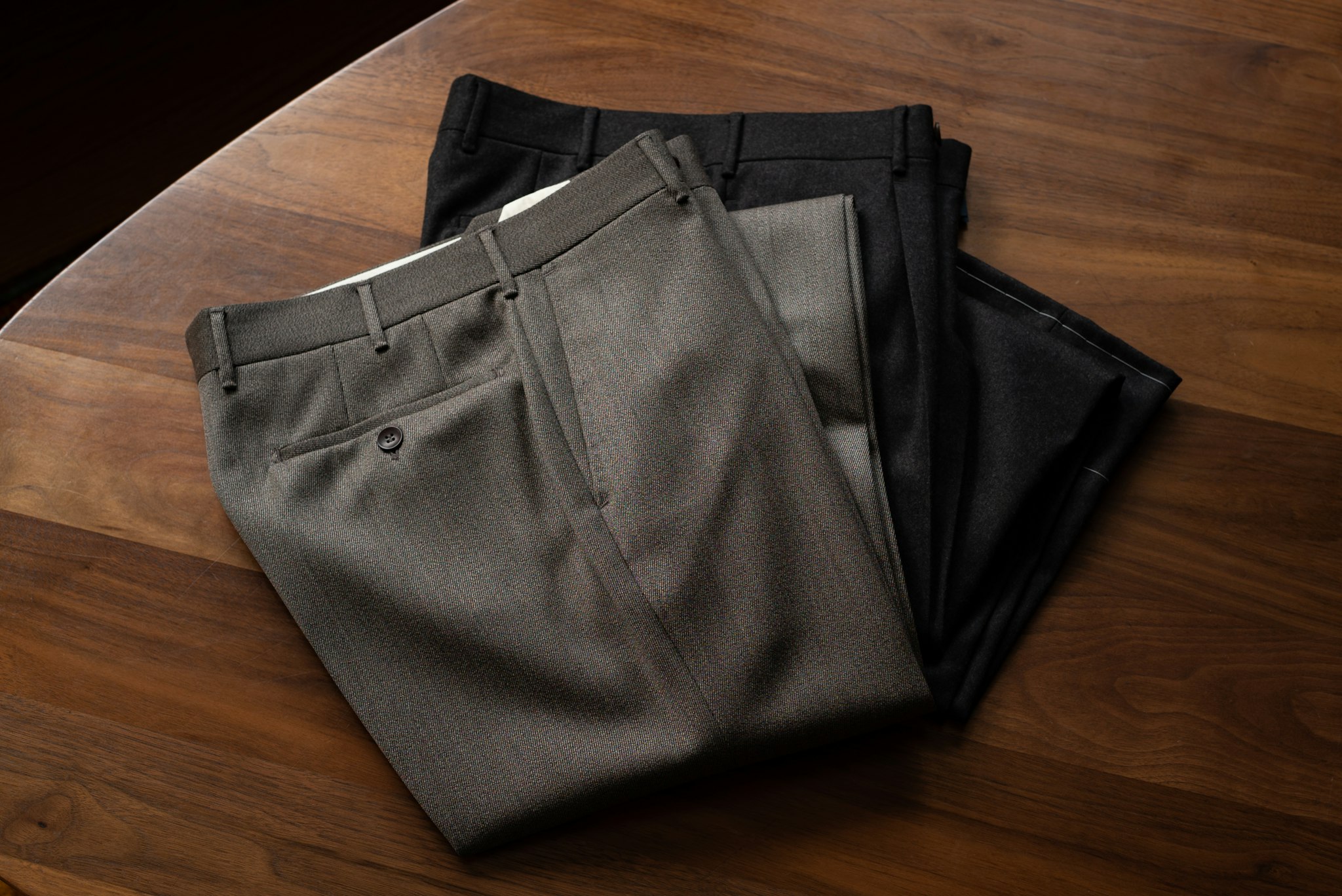


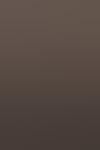
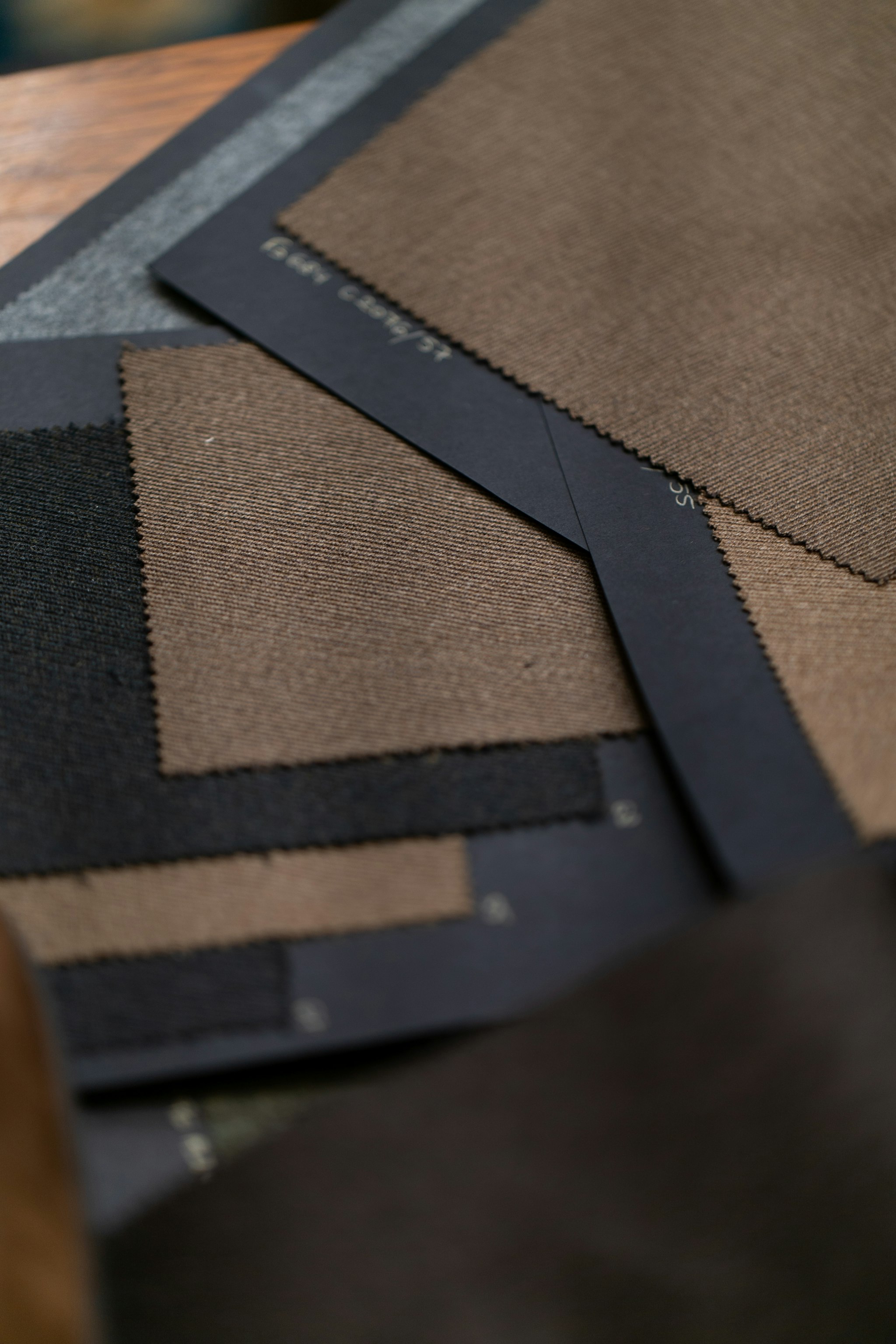

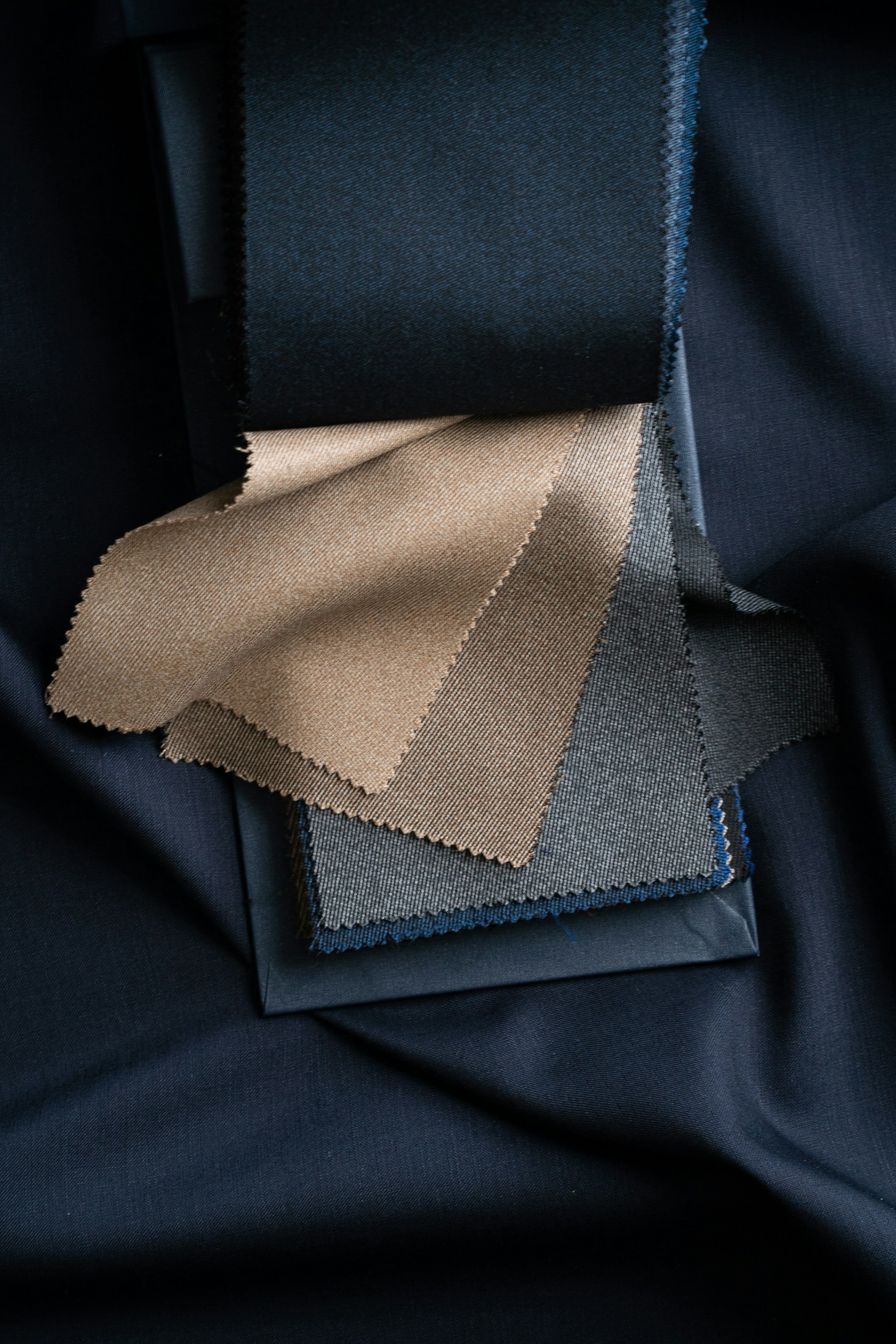
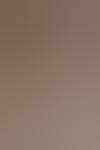
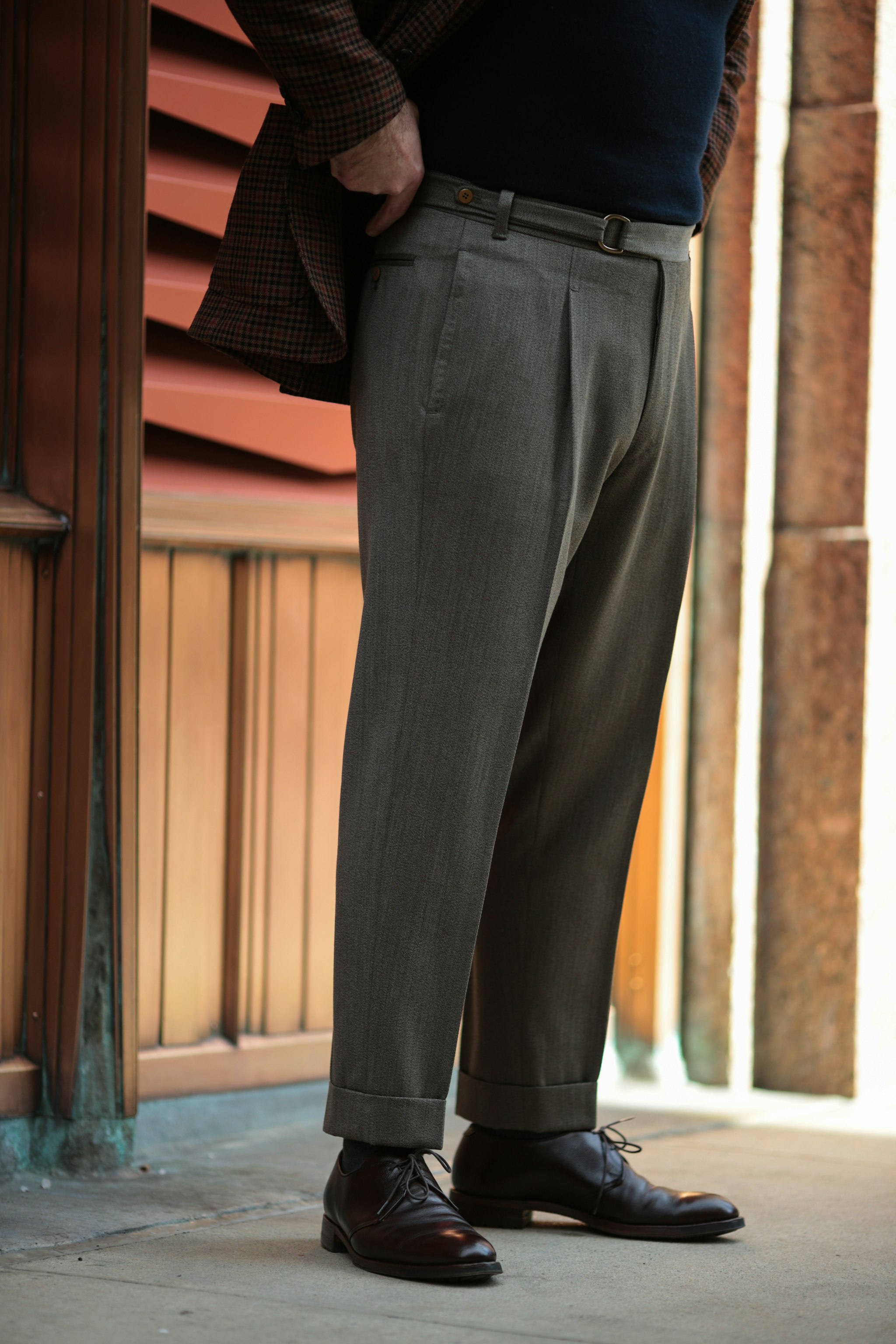



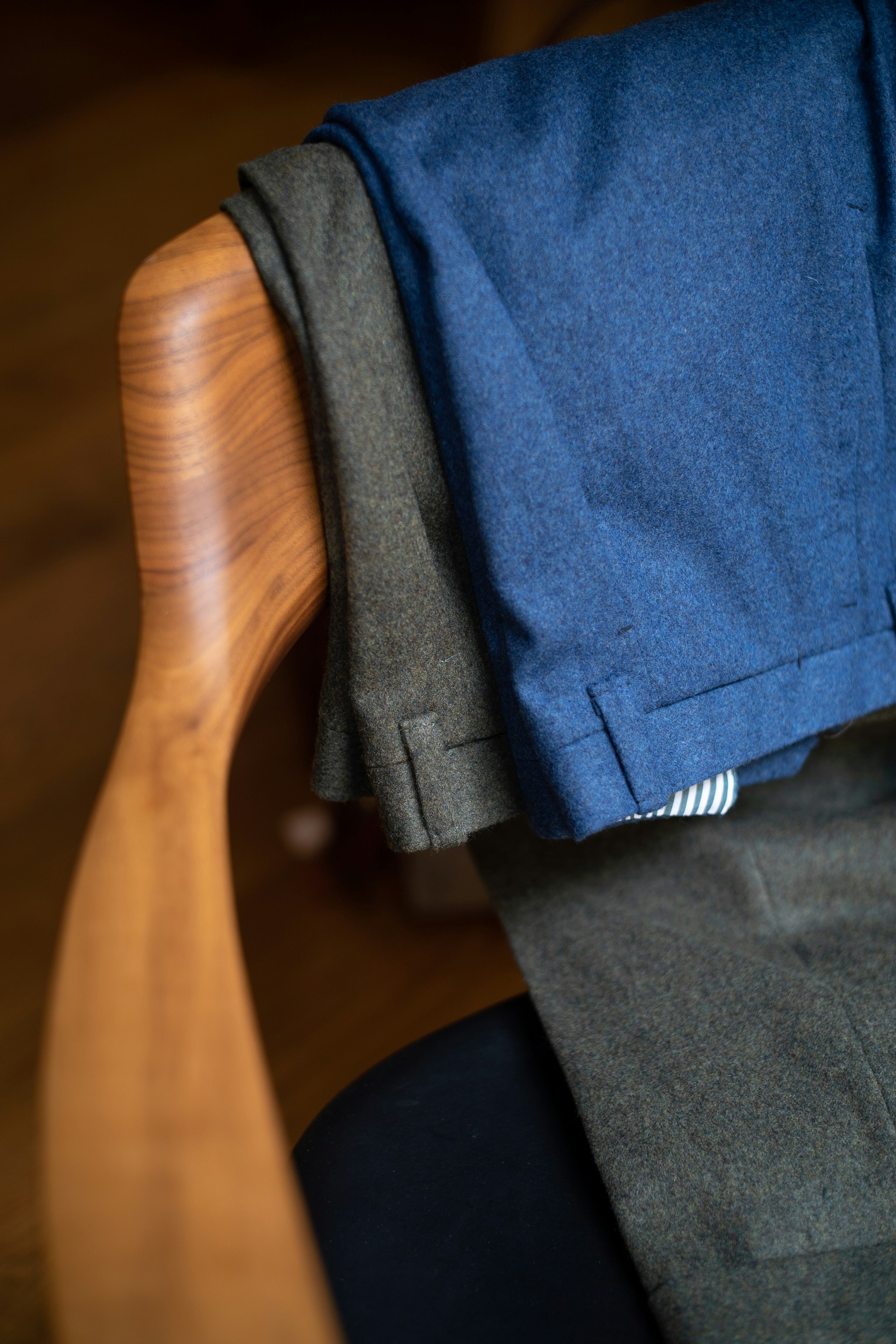

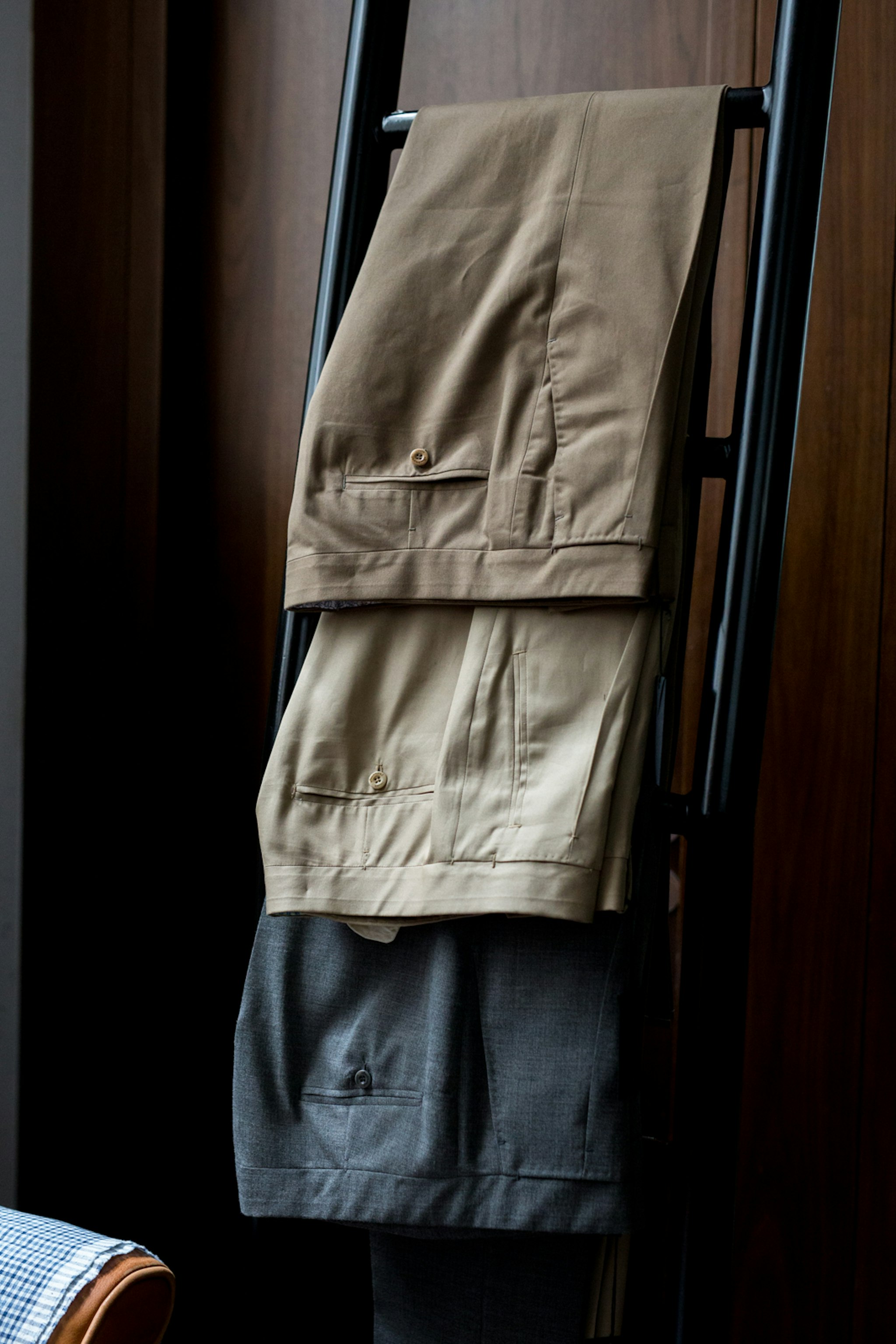

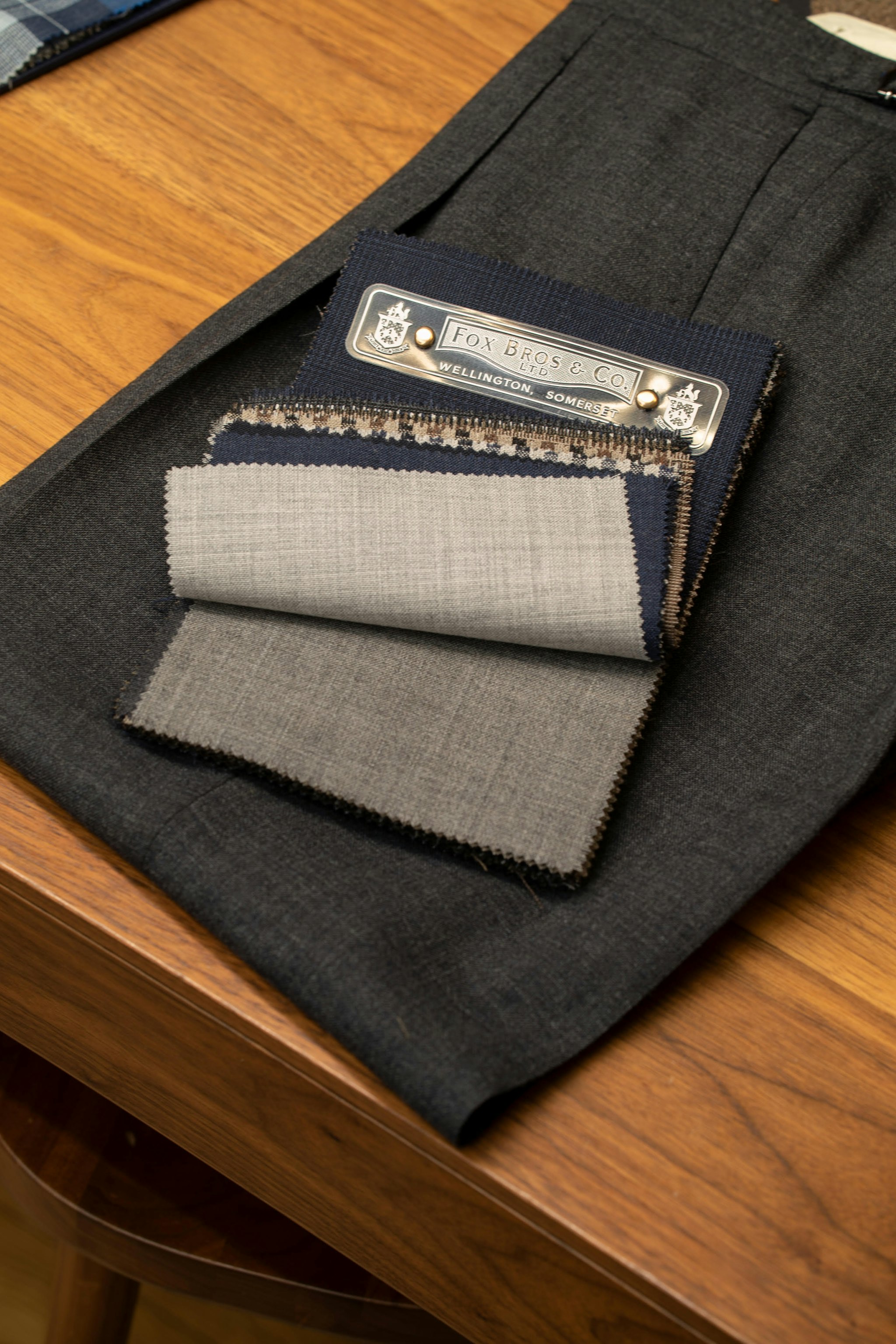

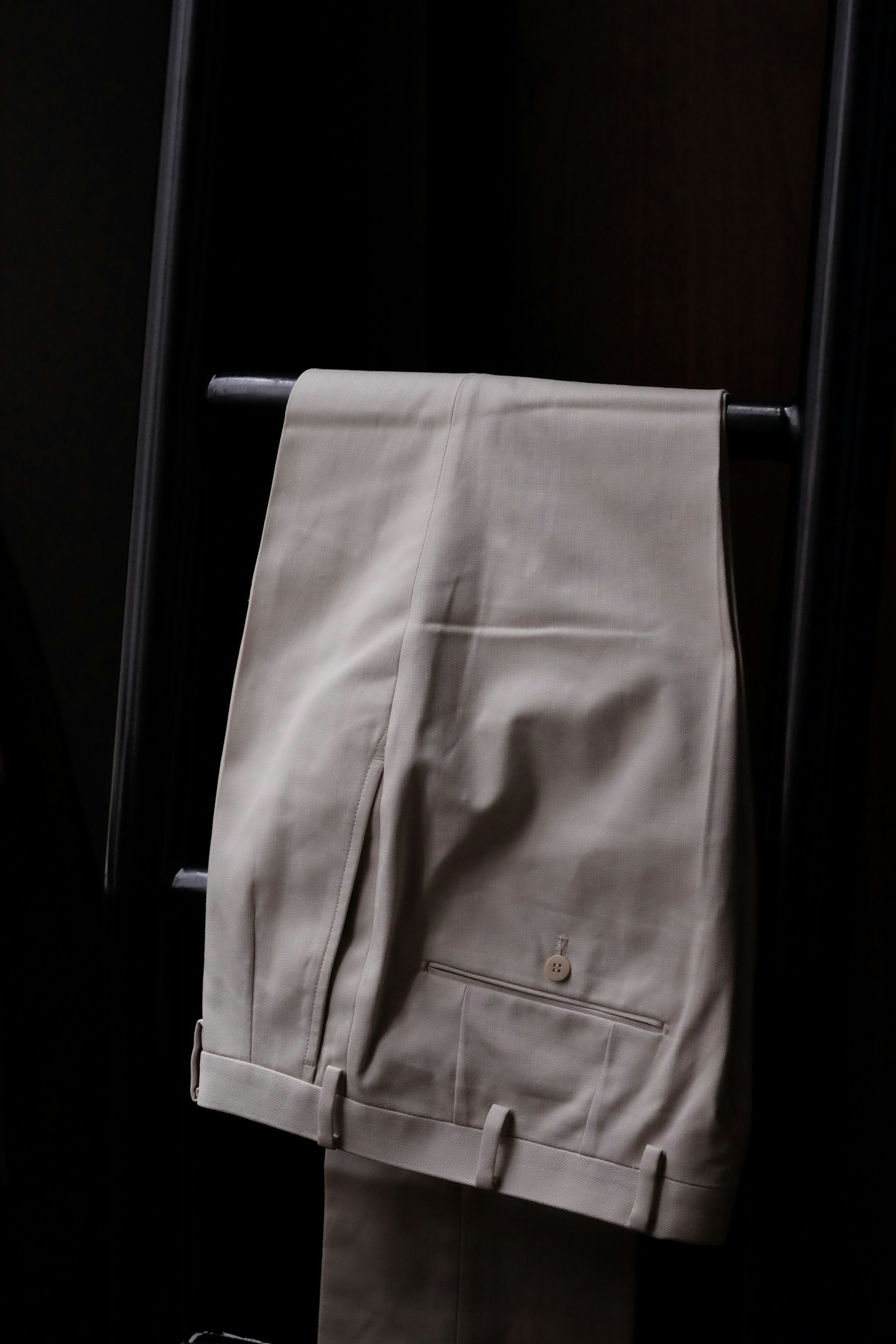
Once you have some solid greys and tans, you can expand your trouser wardrobe into different directions. "After beige, olive is a useful color, particularly in fabrics such as Fresco or cotton," says Mark. “The color looks great with cream or brown sports jackets. Navy can also be good, but you don't want to go too dark. Otherwise, they can look like orphaned suit pants. I like how dark blue trousers, ones that are just a shade darker than denim, look with grey sports jackets."
There are also very casual seasonal varieties. Flecked Donegal tweeds, especially in mid-brown, can be worn in the winter months. But, as Alan notes, you want something densely woven so it'll hold its shape. "Italian Donegals tend to be too loose for trousers, so they work better for jackets."
Mark also adds that, while he occasionally wears linen trousers with sport coats, he mostly uses the material for either suits or casual ensembles. "The heavier, the better," he adds. “The Irish linens are nice because they’re not too transparent.”

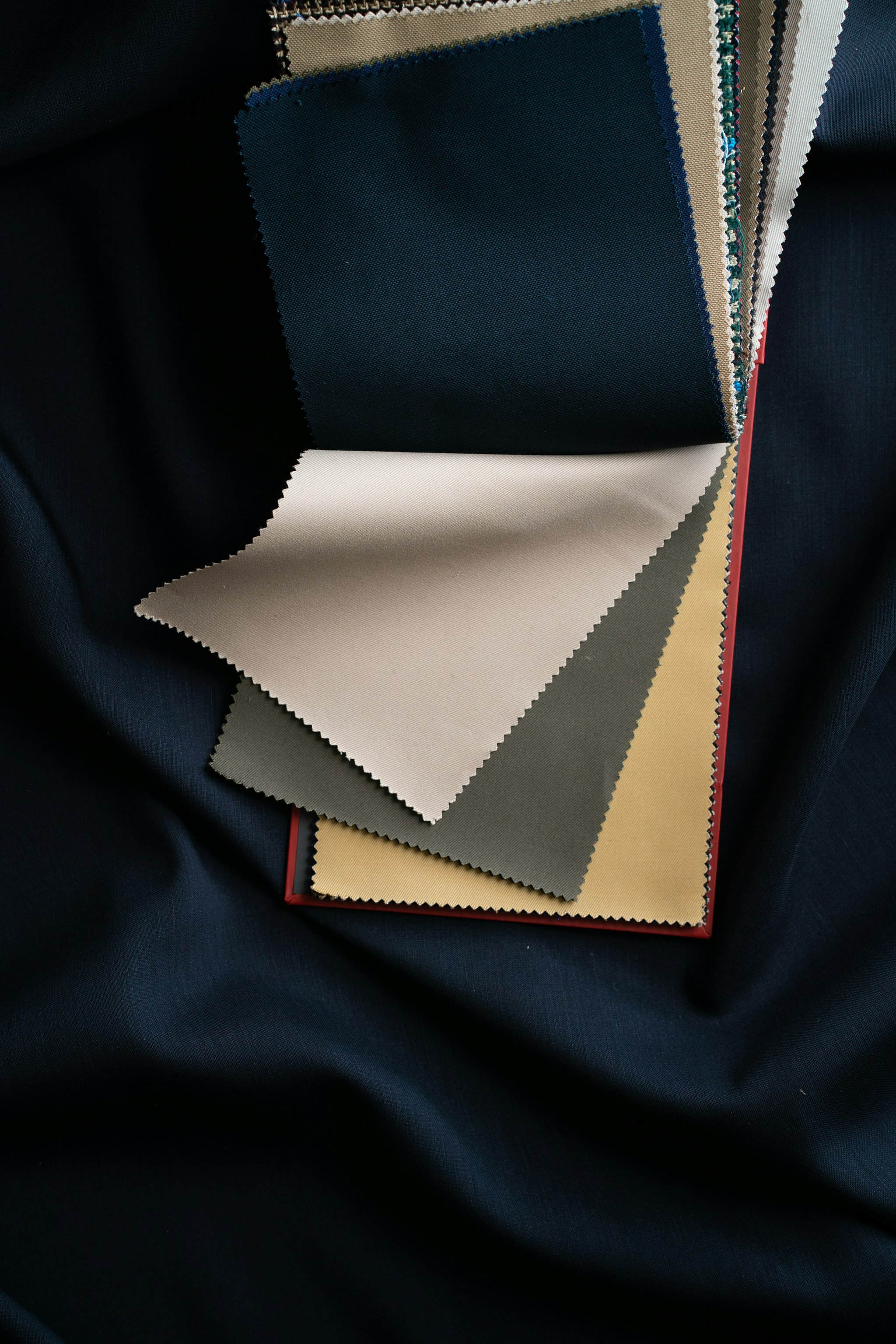





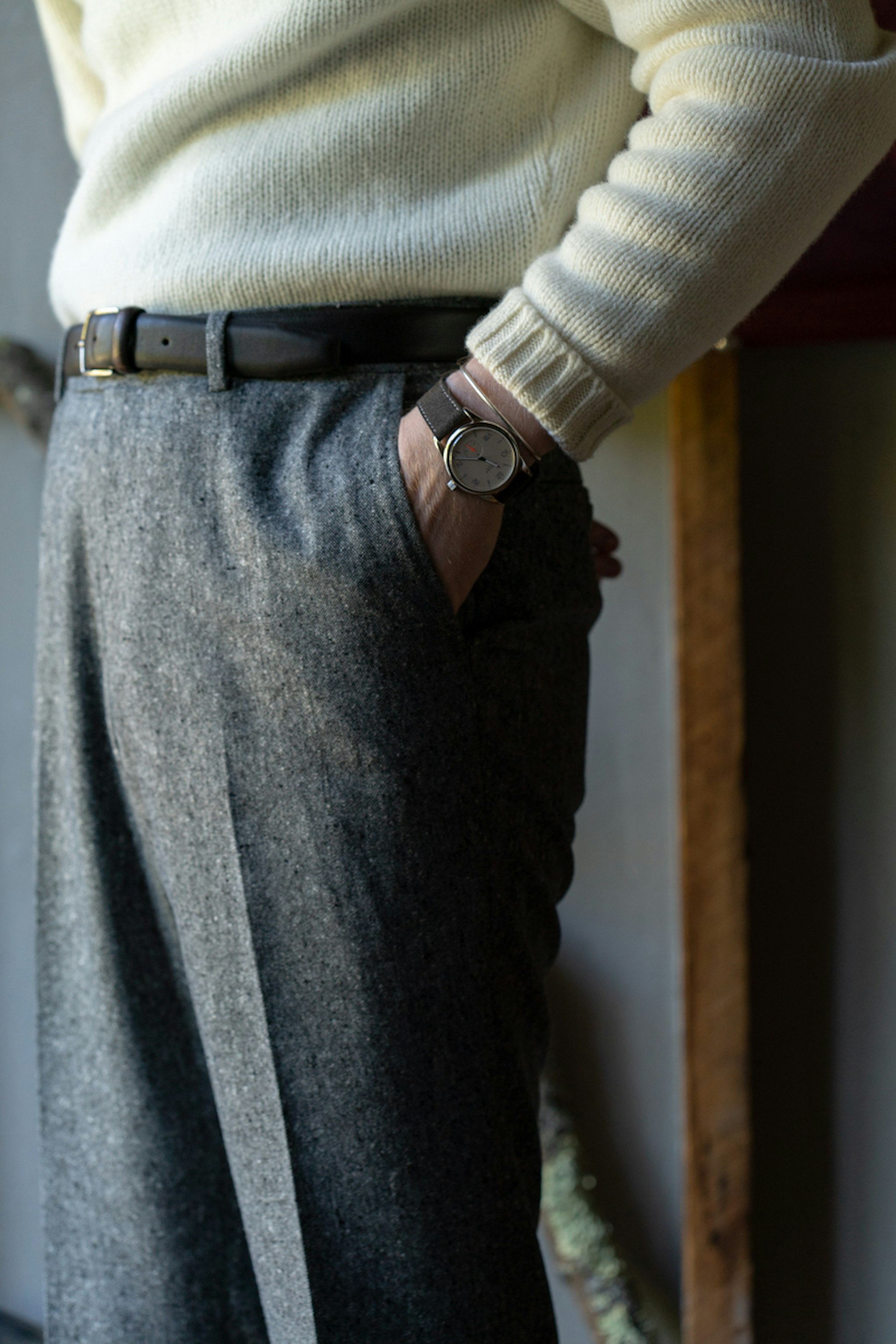
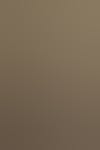


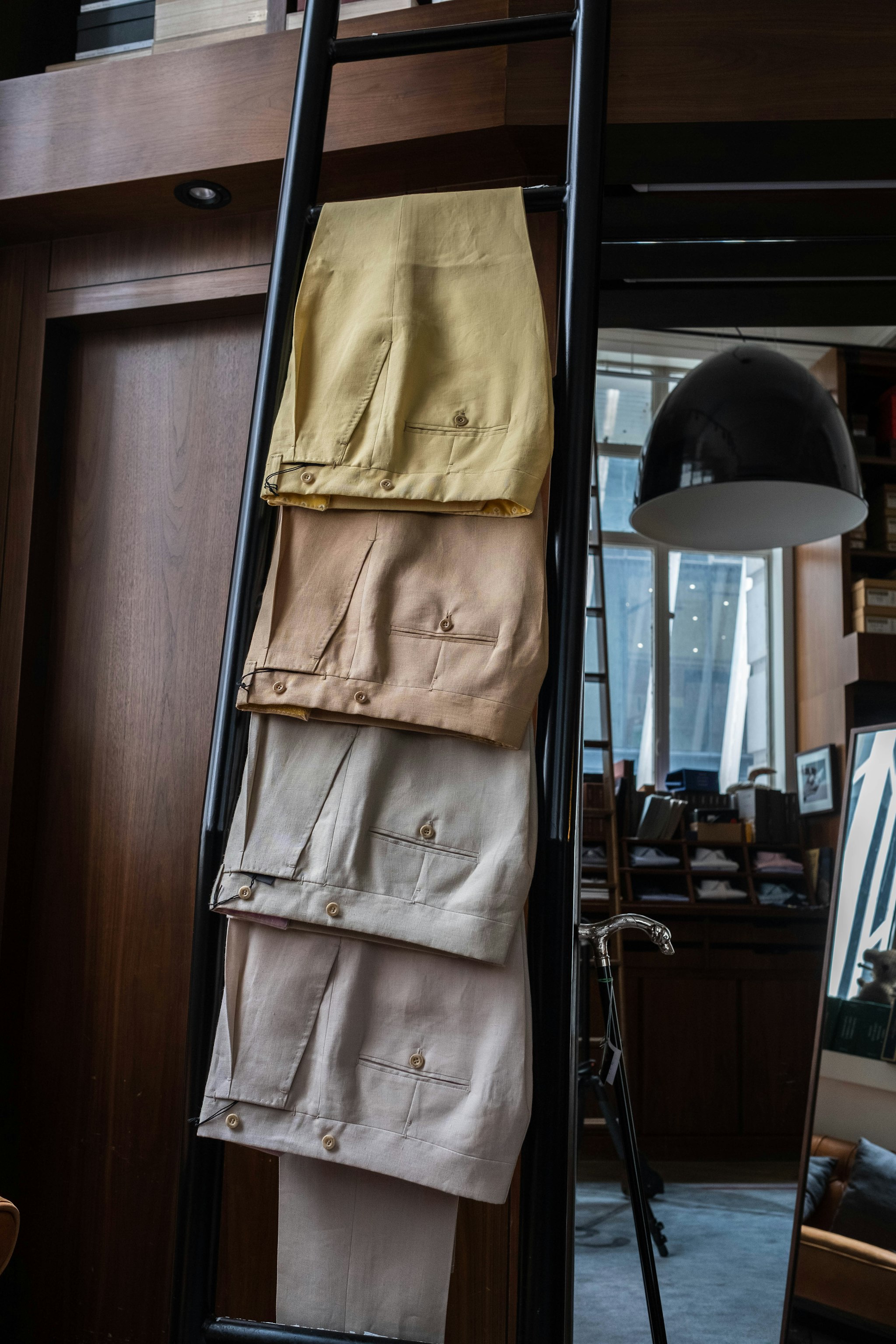

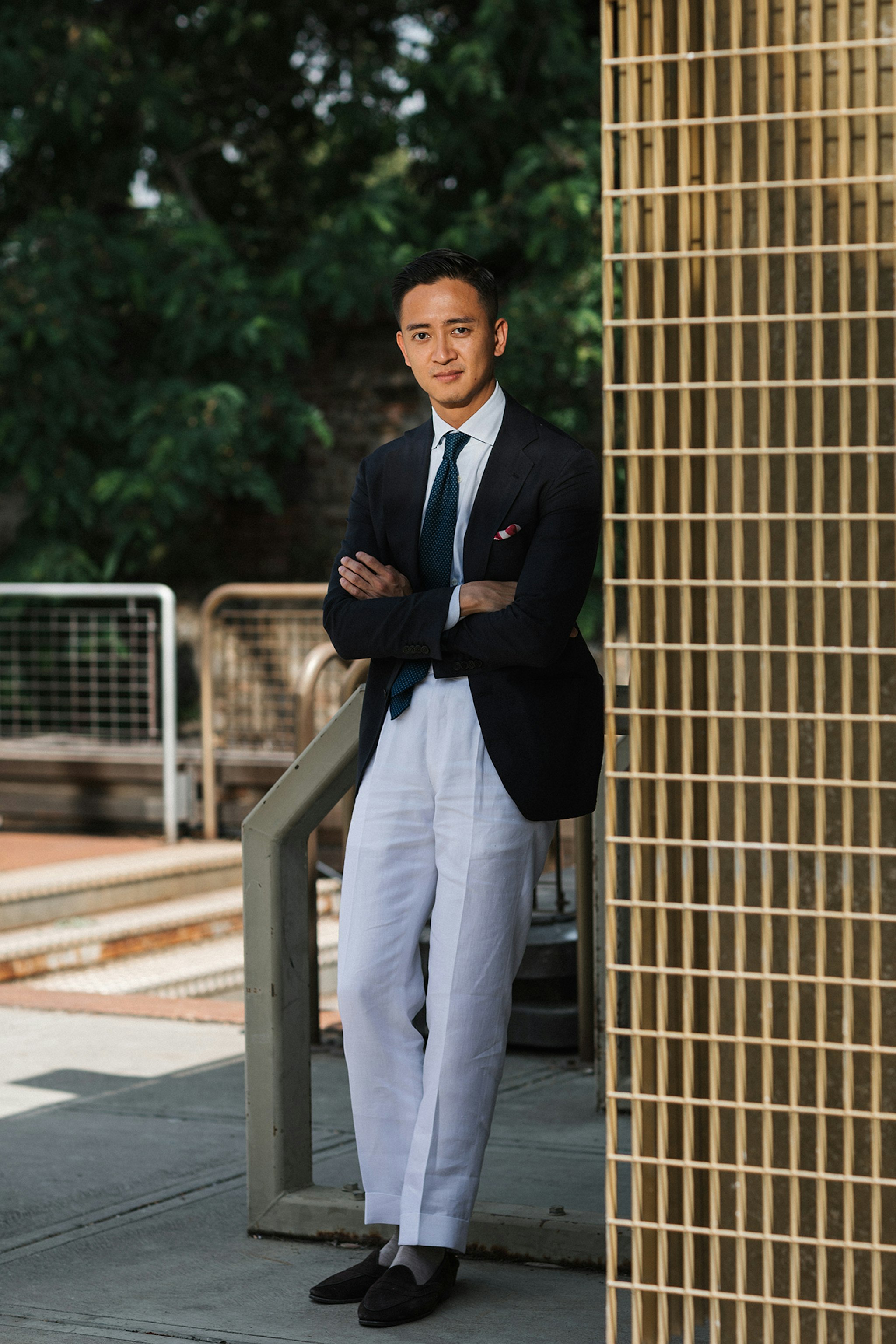
Style-wise, we like cotton trousers of any variety to be flat-front. "Sometimes it can be hard to make cotton pleats lay right," notes Mark. Wool trousers, on the other hand, can go either way. "With wool trousers, I prefer them to be pleated, but not too full across the lap," Mark continues. "With a pleat, you add just a little room to the top half of the trousers, which means you can still have a moderate leg opening and get a taper that adds shape. When trousers are too slim up top, you have to taper the leg more aggressively to achieve the same silhouette, which can look awkward at the bottom. It’s all about relative proportions.“
The standard Armoury style is also a little higher in the rise, something that sits above the hip bone, although a lot depends on the customer's body type and preferences. "It's about striking a balance," says Alan. "In the past, people also wanted very slim trousers, and we needed to push them towards something a little fuller so the pants would drape properly. But nowadays, we're seeing more people value comfort, so things are swinging back towards the middle of the road.“
Other details, such as the inclusion of side tab adjusters, belt loops, or suspender buttons, are just personal preference. Suspenders will make your trousers look their best, as they help them hang properly, but some men find them inconvenient or even archaic. Side tabs and belt loops can be good alternatives, with the side adjusters resulting in a cleaning looking line between the trouser and shirt. "Except for tuxedos, I always recommend getting cuffs though," says Mark. "The bit of weight allows the trousers to hang straighter." Plus, as Alan notes, most of our tailoring is Italian and will look better with cuffed hems.
“Sometimes a guy will come in and look at our ready-made trouser selection. A question we’ll often hear is, ‘what can these be worn with?” says Alan. "When in doubt, wear it with a navy sport coat. That almost always works."
This season's trousers are made from worsted Italian flannel, original Irish donegal, Loro Piana corduroy and more.

